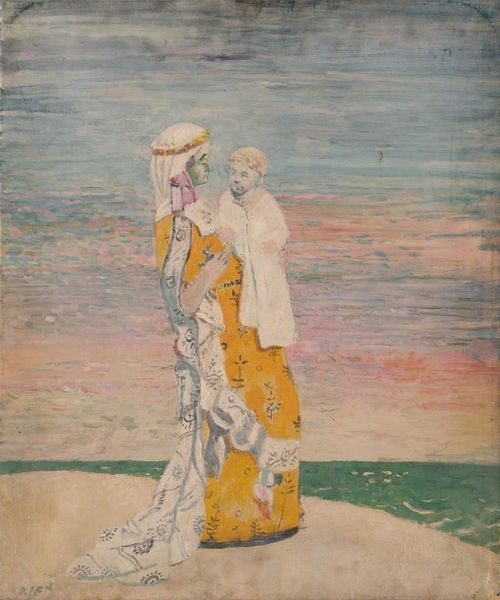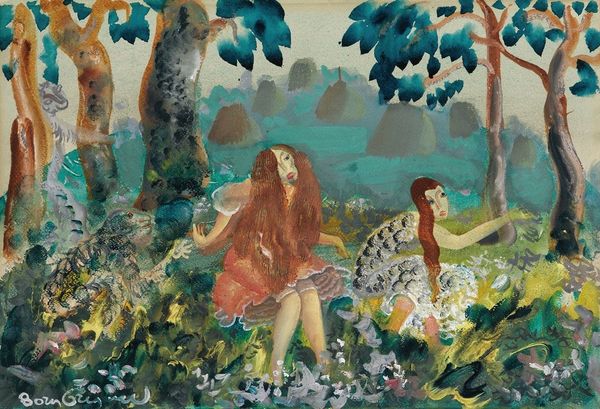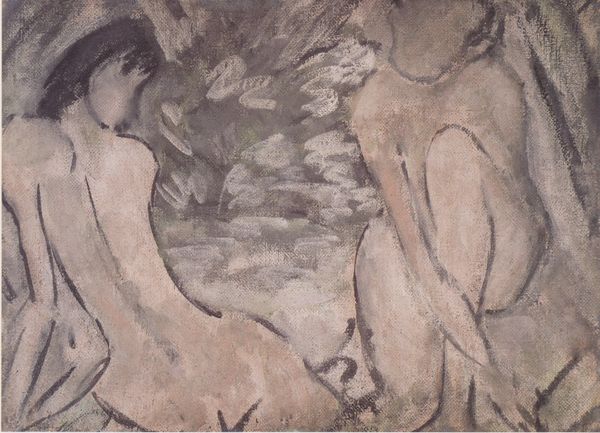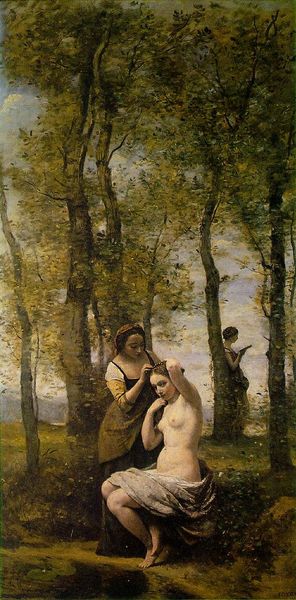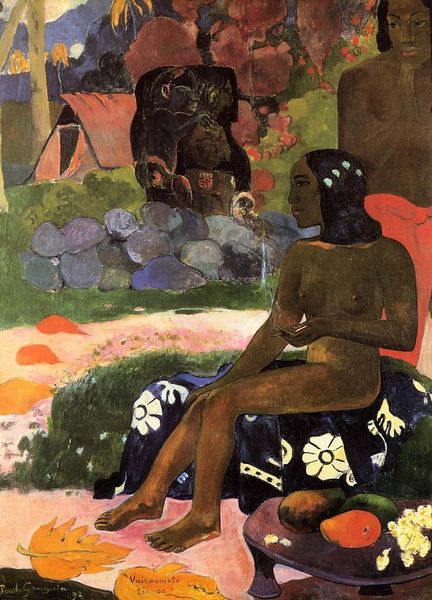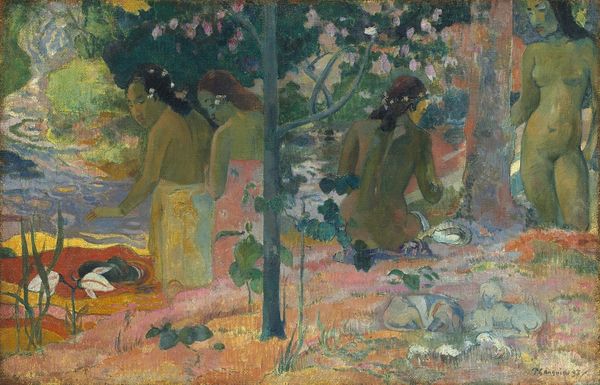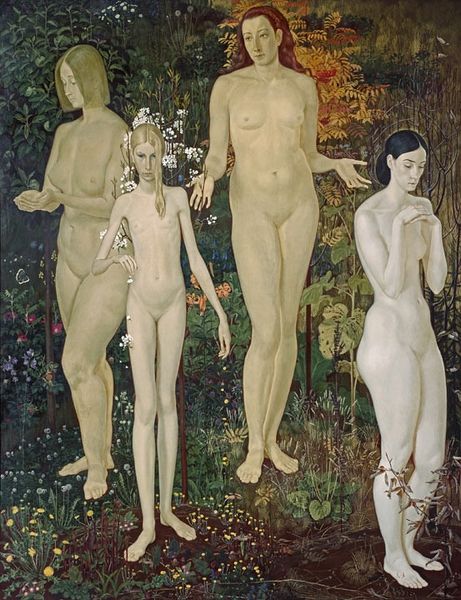
tempera, painting, oil-paint
#
portrait
#
tempera
#
painting
#
oil-paint
#
landscape
#
figuration
#
naive art
#
symbolism
Dimensions: 60.3 x 94.6 cm
Copyright: Public domain
Curator: Here we have Henri Rousseau's "The Happy Quartet," painted around 1902, rendered with oil and tempera. Editor: The figures! There's a strange, dreamlike quality—something very raw about the way these bodies are depicted. They feel so deliberately, almost aggressively, unidealized. Curator: Indeed. Notice the artist’s meticulous application of paint in the foliage and the simplified, frontal poses. It flattens the picture plane. Rousseau’s structural rendering is consistent throughout his oeuvre, a devotion to form. Editor: I'm more interested in the materials. Given that it's oil and tempera, can we discuss the materiality and its labor aspect? These mediums weren't particularly precious; there's an interesting accessibility in Rousseau's choices, a kind of folk-art leaning that challenges traditional academic hierarchies. What kind of canvas was it painted on, how was it prepped? This reveals so much about his approach and context. Curator: Those may not be clearly available facts, but it doesn’t mean the arrangement, balance and symbolism in the forms are invalidated by such lack. Observe how Rousseau employs an allegorical structure within the landscape. The musical male figure, alongside a female counterpart, a child, and a loyal canine; representing an idealistic image of family and nature. The foliage could symbolize growth and abundance. Editor: Right, the image gestures at Eden. What’s missing from your analysis, though, is consideration of who this utopian vision serves. Rousseau's works have an ambivalent relationship with modernity. The 'primitive' style was embraced, it conveniently exoticized and packaged certain themes. His self-taught, working-class background enabled a certain aesthetic trend. The use of specific materials becomes a means for this projection. Curator: Your critique seems driven by concerns external to the painting itself, which, when parsed on its own merit and artistic decisions, functions to create its own symbolic universe of color and space. Editor: Agreed, yet considering material history grants context, it acknowledges both the visible and invisible labour woven into the artwork’s fabric. What seems idyllic on the surface reflects its entangled roots. Curator: Fair. Appreciating how those textures meet in our view reframes our perception. Editor: Precisely. This has indeed broadened my reading and experience.
Comments
No comments
Be the first to comment and join the conversation on the ultimate creative platform.

